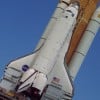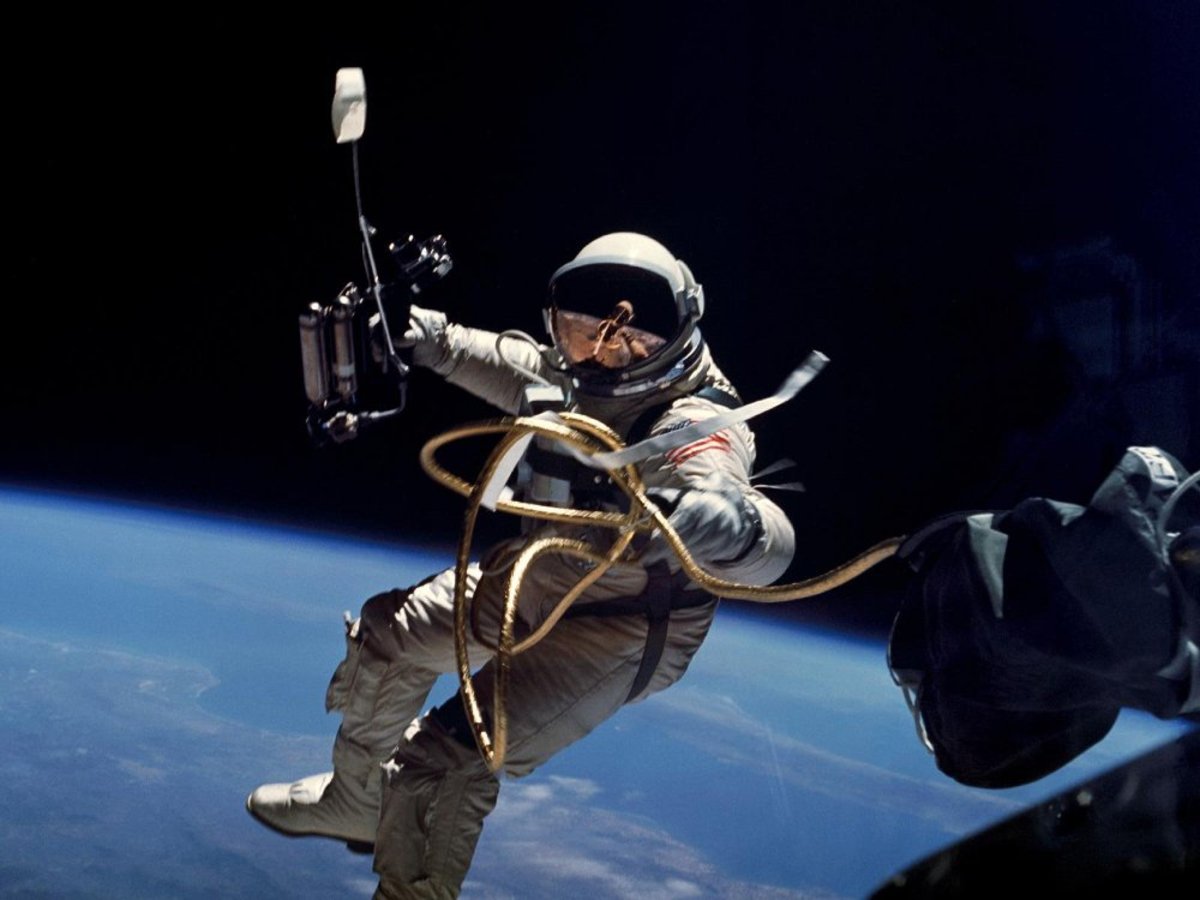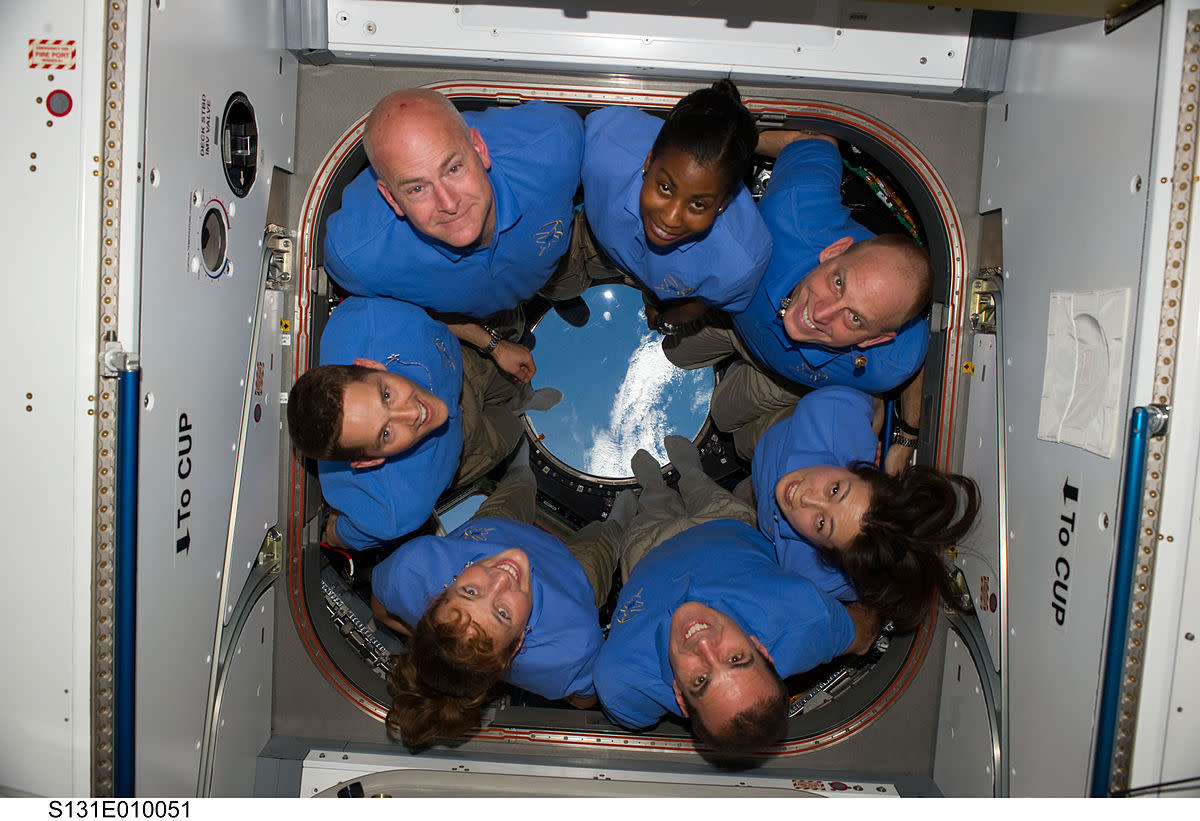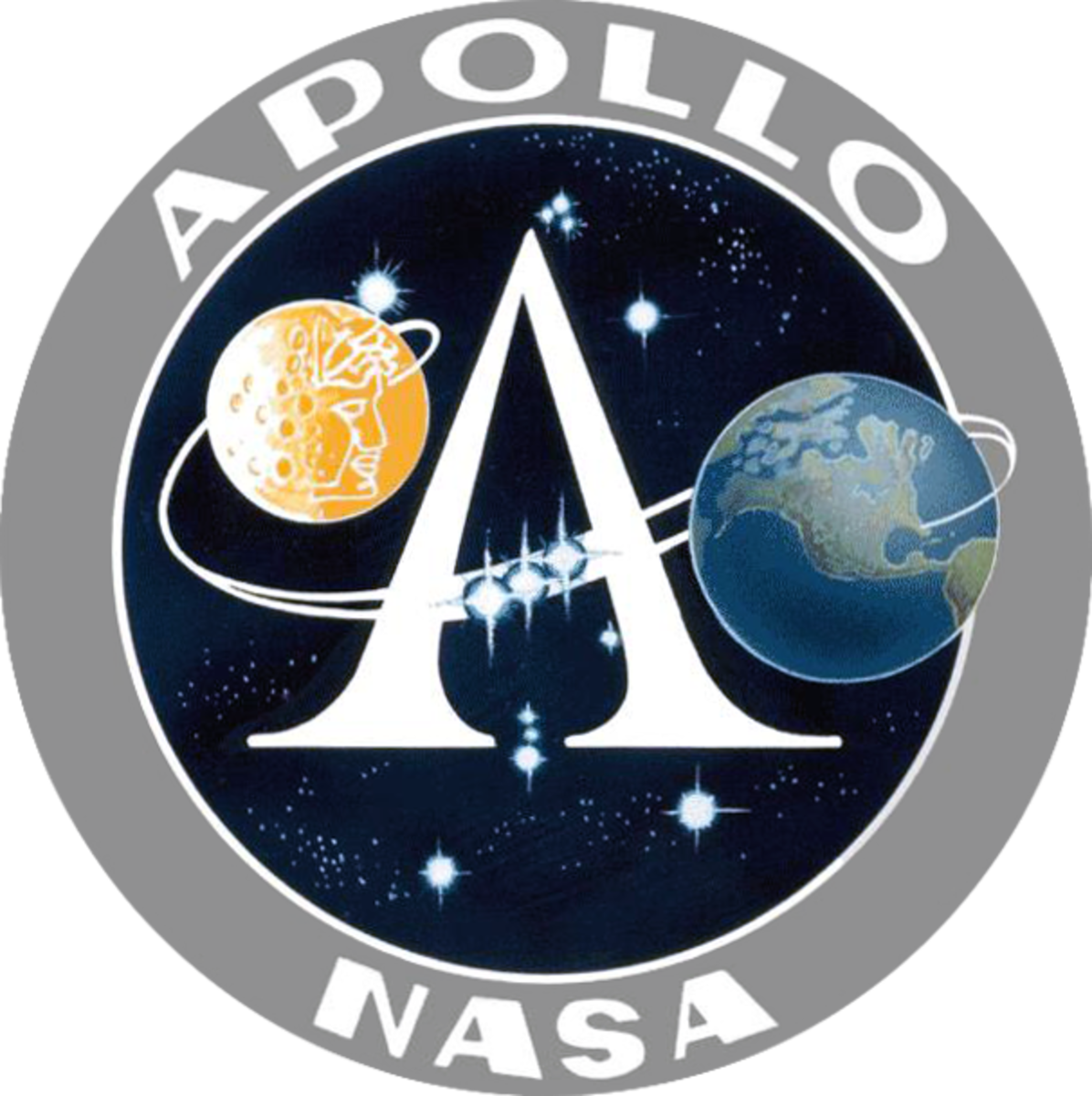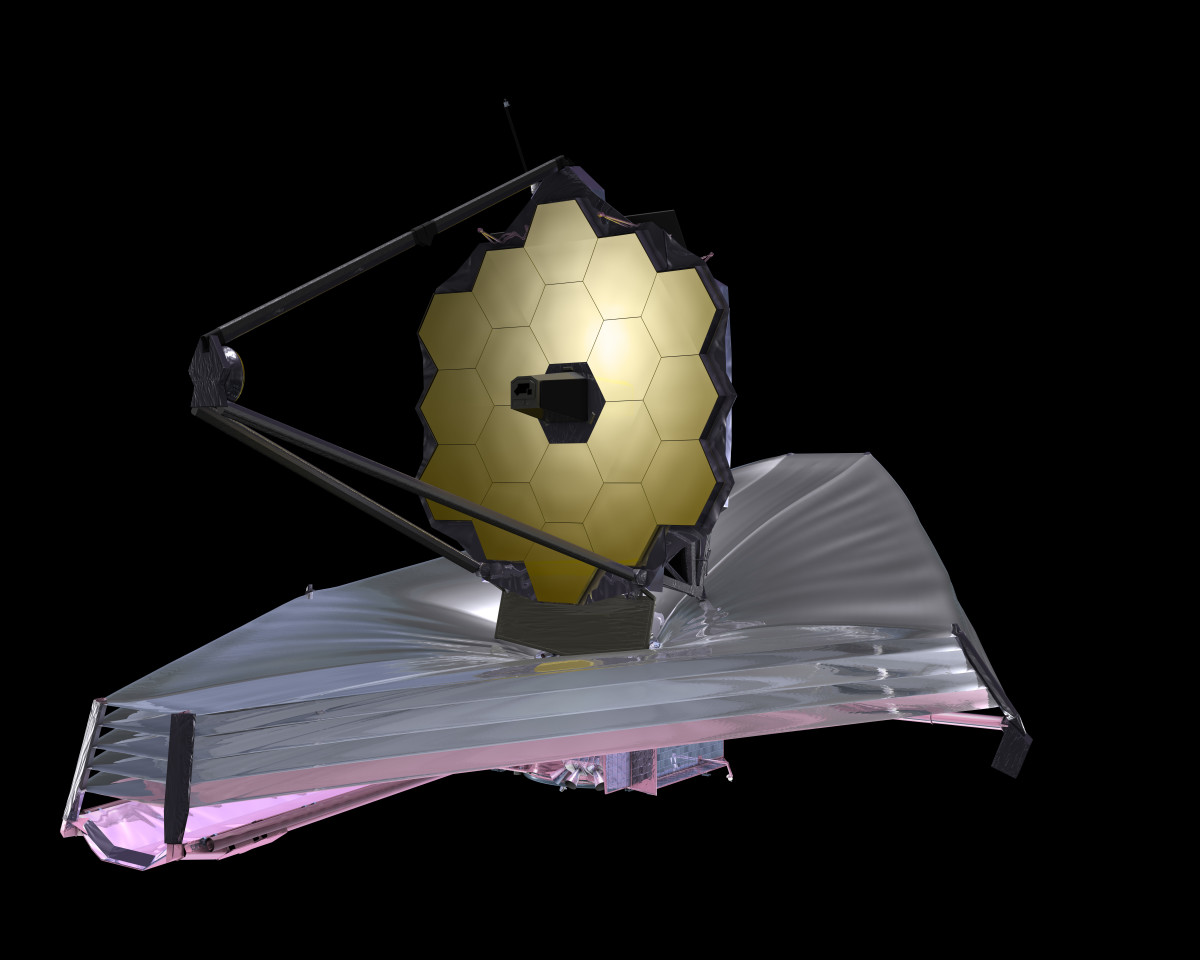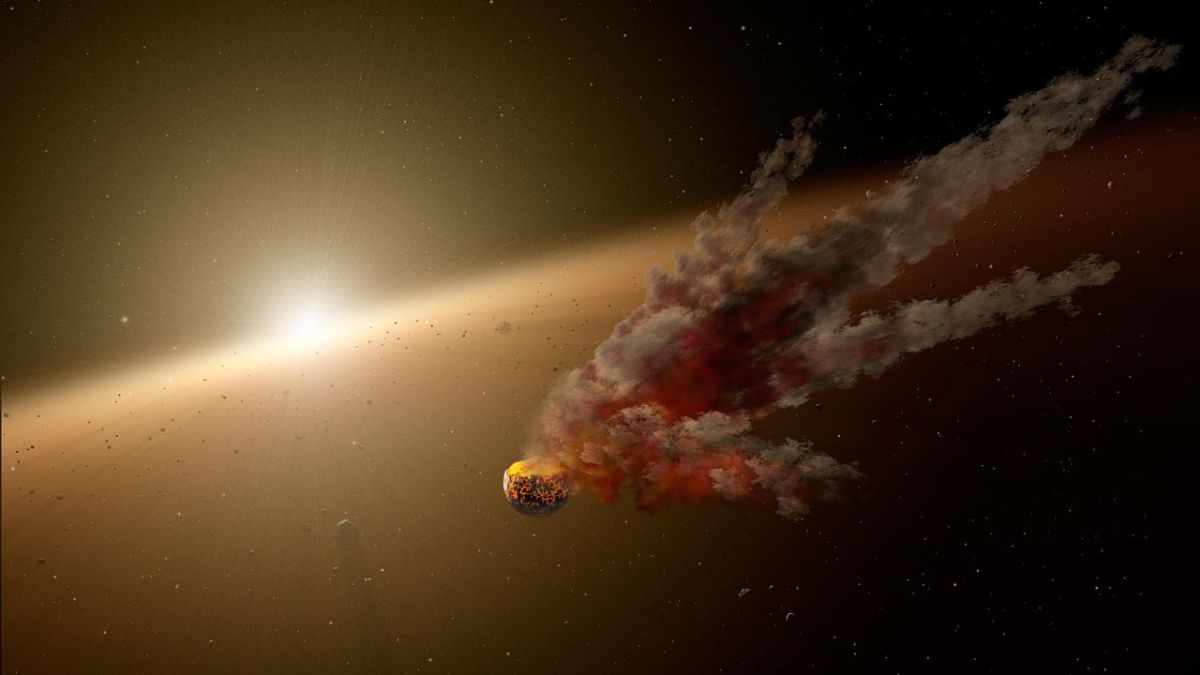NASA STS-133: Space Shuttle Discovery's Final Mission with a Trip to the ISS
STS-133: Shuttle Discovery Headed to the ISS for the Last Time
NASA's space shuttle Discovery was almost fully prepared to launch into space to meet up with the International Space Station (ISS) as part of a mission to bring supplies and spare parts to the outpost and install the Express Logistics Carrier-4. Only two missions followed STS-133 until the NASA space shuttle mission was finally terminated in August 2011. The launch pads have been remodeled to host the next generation of space launch vehicles, and in fact both LC-39A and LC-39B are both being offered for private industry space launched. In late 2010, just before the launch got scrubbed until a later date, I had the extraordinary opportunity to tour Kennedy Space Center and SLC-39A up close and personal from a perspective that most people have never had. Tagging along with a crew that is responsible for ensuring that all aspects of the shuttle's condition before, during, and after launch are documented, I was able to get a once-in-a-lifetime view of shuttle Discovery as it sat on pad getting ready for liftoff.
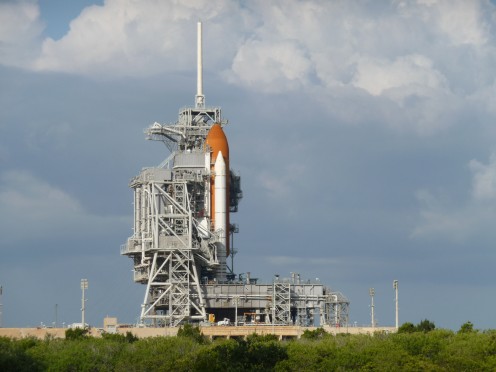
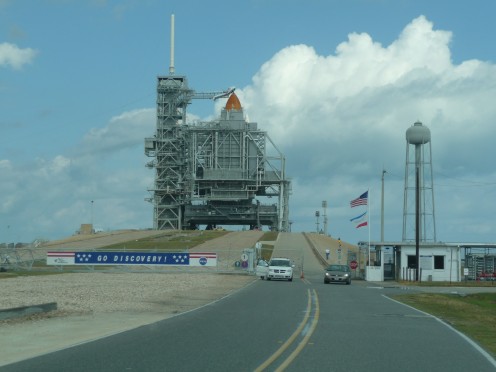
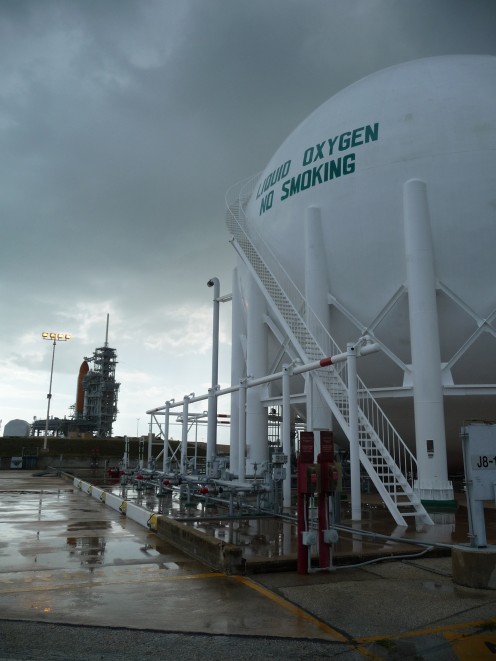
The Buzz at KSC
As with prior shuttle launches for which I've been around the Cape Canaveral area, I could feel the sense of excitement shared not only at Kennedy Space Center, but also throughout the surrounding areas in Cocoa Beach and Titusville, FL. Space shuttle launches are a main attraction for the 'Space Coast' in which thousands upon thousands of people flock from all over the country and the world to see the spectacle that is the shuttle blasting off into the sky from this coastal launch facility. I heard a rumor floating around that nearly 40,000 people were scheduled to be at Kennedy to watch the launch, more than doubling the typical crowd privileged enough to view the event from inside the fence. As I passed along the Banana River causeway, row after row of seats were set up to accommodate the large crowds that would show up on launch day. This didn't even count the tens of thousands that would be watching from along the Indian River or from the beach south of Cape Canaveral, among other places.
Off to the Launch Pad
After passing through the appropriate security checkpoints, we made our way up to the launch pad. Approaching the shuttle service structure, the true magnitude of the launch platform became apparent. The pad is composed of a fixed service structure (FSS) - the taller non-mobile tower with the lightning rod, a rotating service structure (RSS) - the shorter tower that moves away from the shuttle before launch, and the mobile launch platform that the rockets are actually bolted to. The tip of the lightning rod atop the FSS measures 347' above the pad while the top of the RSS is 189' above the pad.
Before accessing any of the launch structures, you are required to remove anything that might fall off of you to avoid foreign object contamination. Stepping onto 1 of 2 elevators that service the FSS, the first thing I noticed was that the 'floors' of this elevator were in feet, ranging from 35' all the way up to 255' - the only elevator that I've ever been on that had floors in feet! Making our first stop at the top floor we exited the elevator and climbed a flight of stairs to reach the 275' mark. From this vantage point, I had a great view overlooking the external tank, solid rocket boosters, and space shuttle Discovery enclosed by the RSS all beautifully back-dropped by the Atlantic Ocean.
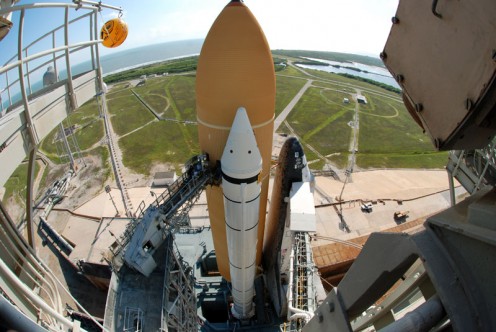
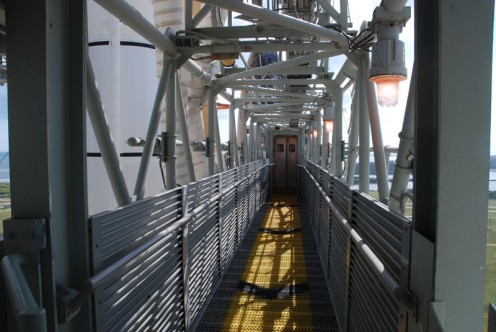
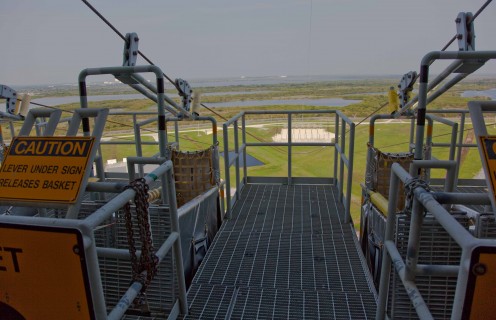
The 195' Platform - Access to Discovery
Descending via staircase to the 195' platform, the most prominent feature between the FSS and the space shuttle is what I'll call the 'astronaut bridge'. This walkway is the only way for astronauts to enter the shuttle when it has reached the pad and is coupled to the 'white room' just prior to interfacing with the orbiter. The hands-down highlight of the day was walking down this path, reaching the double swinging doors, and entering a place where only astronauts, VIPs, technicians, and lucky fools like myself have gone before. I was present on-pad just one day prior to the scheduled launch so final steps were being taken to prepare the shuttle for its journey as I entered the room stepping across sticky paper on the floor to clean my shoes of dust and debris. USA technicians adorned in white garments and surgeon's caps were busily loading things into the shuttle as I peered through the door of Discovery in undoubtedly the only time I'll ever get to see such an event. We didn't stay long as space was quite limited, but that brief moment will forever be fixed in my memory.
Opposite the astronaut bridge on the 195' platform sit 7 tethered escape baskets awaiting astronauts in case of an emergency. If necessary, astronauts can jump in these baskets which will then take them on a cable ride reaching speeds of nearly 55 miles per hour until they safely reach the ground below. Astronauts would then be taken away to safety in an armored personnel carrier. While not quite as exciting as the space shuttle side, the escape pods were neat to see as I'd never heard of them or noticed them before.
Moving on to the RSS
Moving down the FSS we arrived at an access point for the RSS. Entering at this level you can travel to several different platforms of the RSS via stairs and ramps. Two of the places I visited were the top of the RSS with close access for inspection of the external tank and a room surrounding the Forward Reaction Control System (FRCS) of the shuttle. Climbing to the top of the RSS, I found myself within feet of the large orange external tank. Looking to the tip of the tank I could see with great detail what is affectionately known as the 'beanie cap' or the vent hood that is responsible for venting away dangerous oxygen that has boiled off from the liquid oxygen. As with standing at the top of the FSS, the view of the Atlantic was amazing and the proximity to the enormous external tank was humbling.
Descending from the top of the RSS along a series of ramps and steps, we entered a closed door into a room surrounding the tip of the space shuttle. From this vantage point I could see directly down the length of Discovery from the nose, past the covered cockpit windows, and along the top of the orbiter. I could see the numbers on the individual tiles that were placed along the underbelly of the shuttle to protect it during the intense heat of re-entry. One of the jobs of the crew I was with was to document in great detail the condition of these tiles - when the astronauts use the robotic arm to inspect the shuttle for damage, it is these images that they compare with to see if anything has changed since before liftoff.
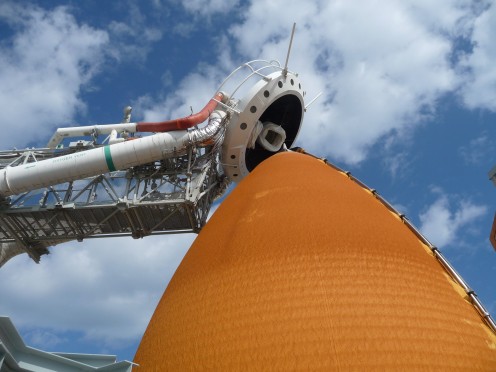
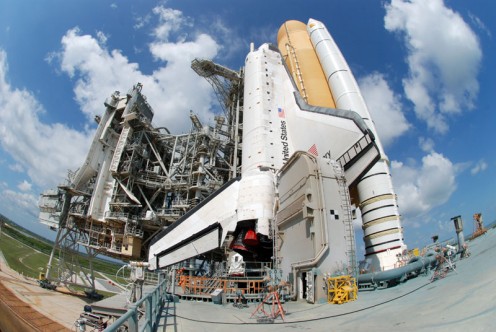
At the Bottom - the MLP
My final stop before leaving the launch pad was the Mobile Launch Platform (MLP).The MLP contains components of the sound suppression system and it has three holes for the two solid rocket boosters and the three space shuttle main engines to exhaust out the plume deflectors away from the launch pad. This is also where the solid rocket boosters make their final attachment to the pad through a set of explosive bolts and where two Tail Service Masts provide umbilical connections to the orbiter including liquid oxygen and liquid hydrogen lines. The MLP is enormous and by itself weighs more than 8 million pounds! It is from the MLP that you can gain the most significant perspective of the sheer size of the orbiter, tank, and boosters towering above you.
Well, I hope you have enjoyed my tour through Pad 39A at Kennedy Space Center as the space shuttle Discovery prepared for its final flight into space to rendezvous with the ISS. As with nearly every space shuttle launch there were delays and schedule slips, but Discovery lifted off in February 2011 time on the STS-133 mission. If you ever had the opportunity to go to Florida and observe one of these launches you undoubtedly share in the energy and awe of one of these unique ventures into space!
